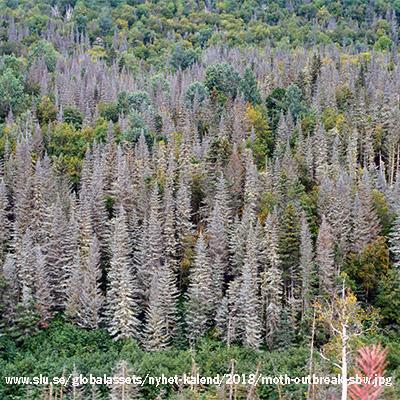Incorporating Spruce-Budworm Impacts into the Acadian Variant of the Forest Vegetation Simulator

The spruce budworm (SBW) insect is the most profound natural disturbance agent in the Northern Forest. Periodic outbreaks cause extensive mortality and growth reduction of spruce and fir trees with great consequences to forest productivity. Budworm outbreaks result in great uncertainty in predicting future wood supplies and forest conditions. Sustainable management of the Northern Forest requires an understanding of the highly variable dynamics of defoliation and forests' growth responses, which has not been comprehensively evaluated in this region.
The Forest Vegetation Simulator (FVS) is an individual-tree growth model widely used in the United States and Canada to predict stand dynamics in response to various disturbance-causing agents. NSRC researchers evaluated individual tree and stand growth responses to SBW defoliation, as well as variations and dynamics over time of individual tree defoliation. They used two large-scale sets of species- and region-specific individual-tree-level data from 560 permanent sample plots spanning the last SBW outbreak (1970s-1980s) in Maine and New Brunswick. Based on these evaluations, they modified FVS-ACD (Acadian variation of FVS model) to account for the impacts of SBW defoliation.
The new capability of FVS-ACD consistently showed significantly lower biases and errors in predictions than previous models. The refined FVS-ACD incorporates the impacts of SBW defoliation into predictions of stand dynamics to support management and protective activities against SBW defoliation in the Acadian Region, and its framework can be applied to other regions and other forms of defoliation.
